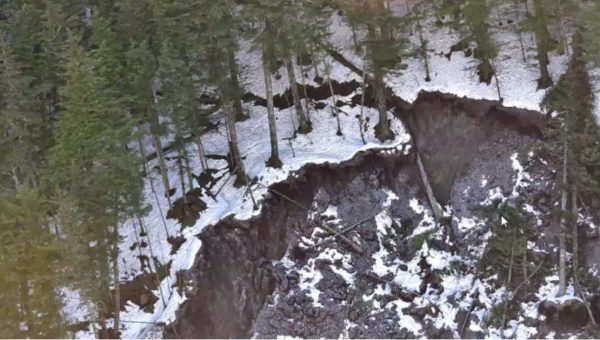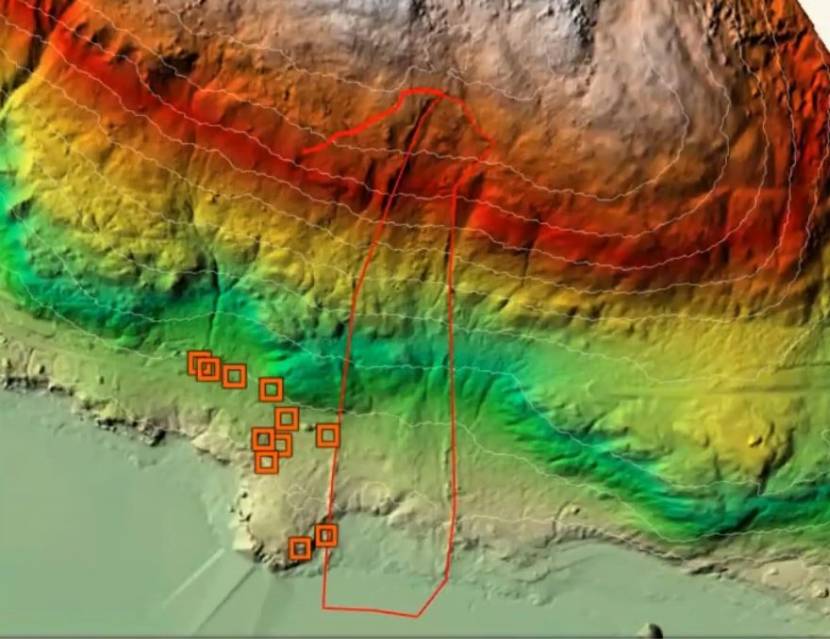
Geologists studying the Haines landslide that swept Beach Road are concerned more material could break loose. During helicopter flights, they identified a deep crack in the hillside extending south from the crown of the existing slide area.
At a town hall meeting Thursday evening, Erik Stevens with the Haines Avalanche Center said the team of geologists is using light detection and ranging imagery (LIDAR) to examine the crack without putting anyone in danger.
“This is one of the tools that the geoteam has been using to look at the terrain very carefully and to try to analyze and understand any features that stand out that could be of concern,” he said. “This LIDAR is a very high precision altitude measurement basically.”
The LIDAR imagery shows the crack cuts south across the hillside above several structures. Stevens said that the team of geologists was unable to determine how far the crack extends.

“We’re working on analyzing this data as quickly as possible and trying to answer that question and some other questions as well,” Stevens said. “We’ll be gathering more LIDAR data over the slide tomorrow, if the weather cooperates, and doing our best to fully understand the extent of this.”
The geologists warn that a second landslide at Beach Road could trigger a local tsunami.
Residents living along Beach Road south of the Portage Cove Campground evacuated their homes following last week’s slide. Upper Mount Riley Road was added to the evacuation area on Wednesday.
Interim Borough Manager Alekka Fullerton said the Alaska State Troopers are providing an additional state trooper and wildlife trooper to help secure the evacuation area and prevent people from entering it.




